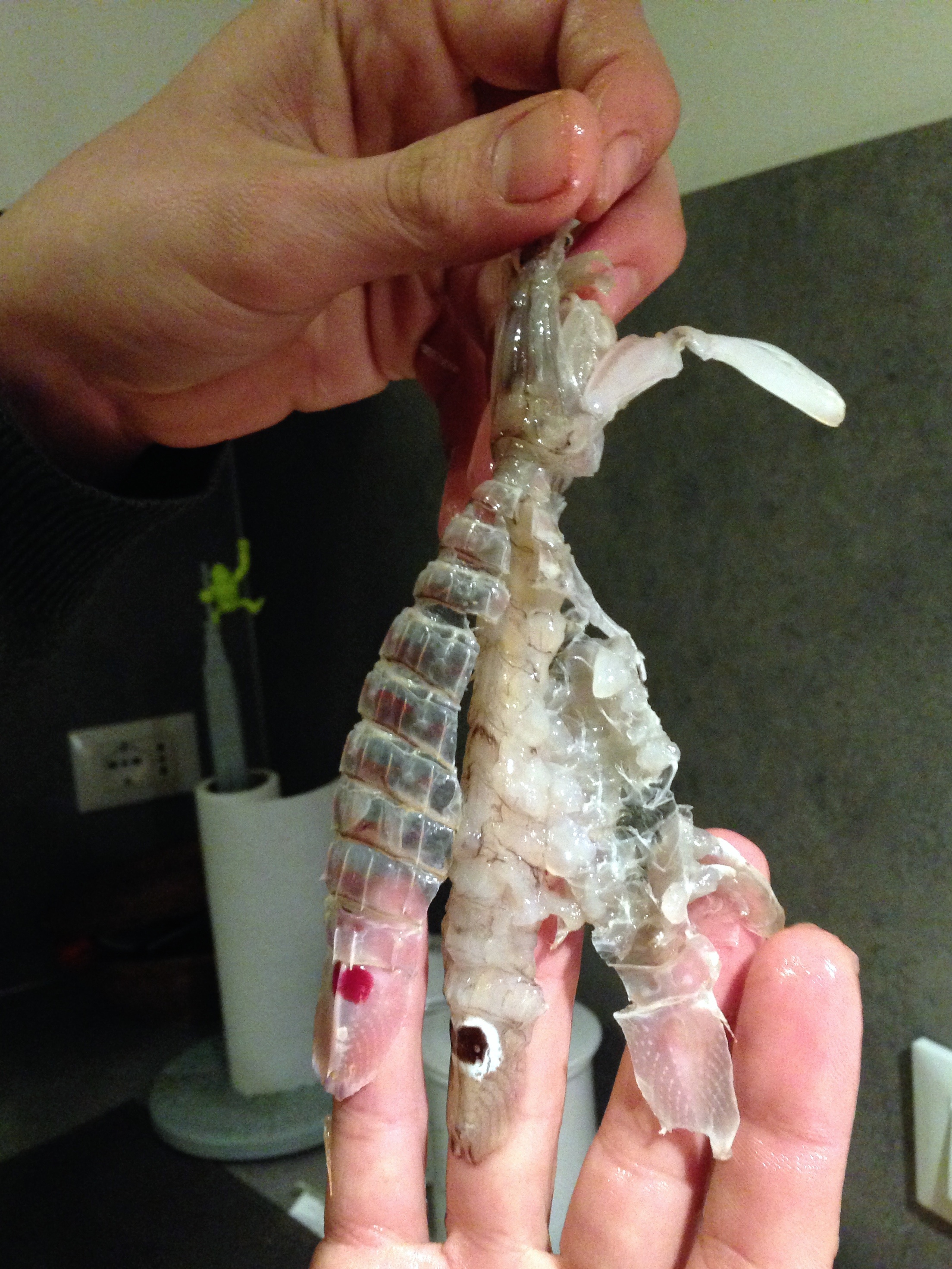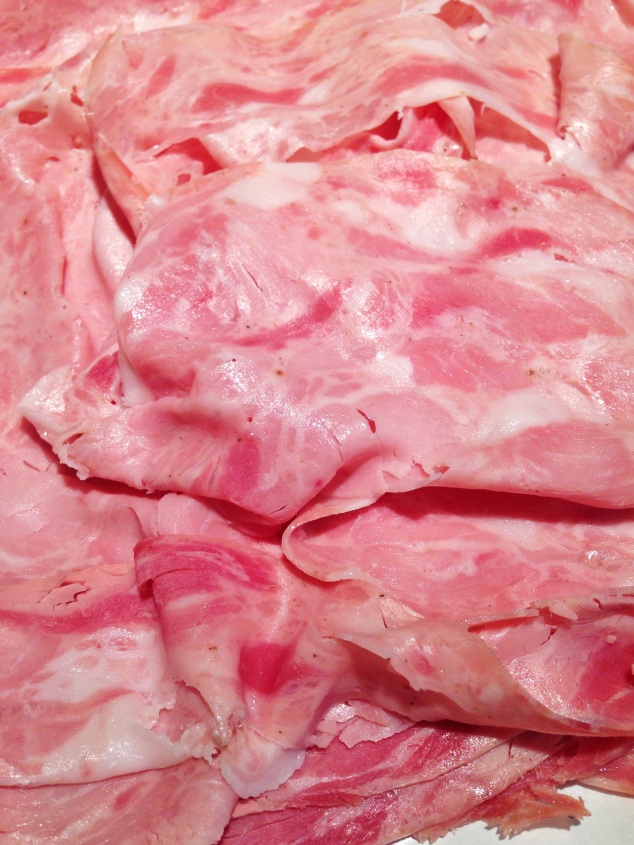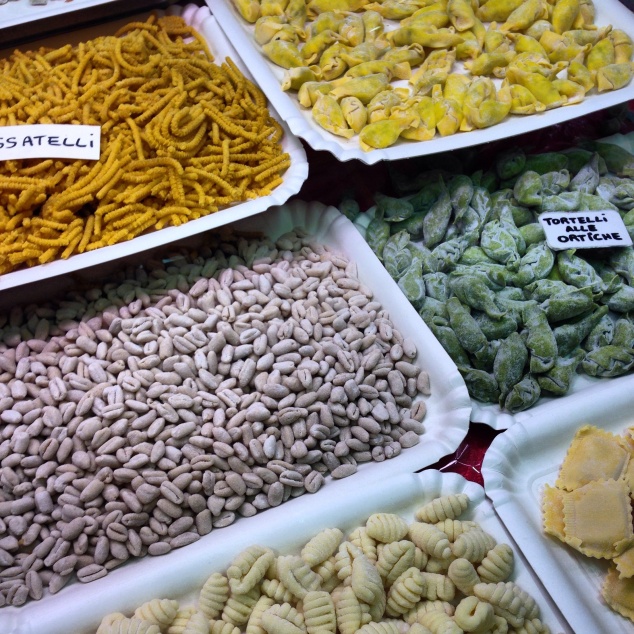In the Mediterranean Sea there is a little animal that is so ugly – I mean really ugly – that I’m sure that if it weren’t for its delicious taste nobody would have the courage to eat it.
It’s a grey white (with few pink shades) crustaceous approximately 20cm long that at one end has a little alien head and, at the other, a black stain that looks like two gigantic eyes…

The canocchia
Not yummy right? But this little thingy, the canocchia (also known as pannocchia, or panocchia, or by its scientific name Squilla mantis), is one of the tastiest examples of seafood that one can have.

A clean canocchia
Its meat presents a very mild taste – much more delicate than shrimps, for instance – and since it is very soft, it almost “melts” completely when cooked, creating a sort of cream that is one of the best pasta sauces I’ve ever tried.

Spaghetti alla chitarra with canocchie
In fact, my boyfriend knows how to cook some Linguini alle canocchie that always blows me away. In this recipe, apart from some olive oil and garlic at the beginning and a sprinkle of parsley at the end, has nothing else but the canocchie’s meat (added just at the end). It practically “dissolves”, creating this sauce that embraces each string of pasta.
Actually, the meat is so tender and sweet that eating it raw is also exceptional (I’ve written about raw fished and seafood here). And specking about that, as it happens with lobsters, the canocchie should be preferably bought alive, so that any doubt about its freshness is gone.
Their only flaw is the fact that they’re a little tricky to clean; it’s difficult to detach the meat from the exoskeleton without breaking it. But don’t worry, I can give you two options: (1) simply let it go, grab the little animals with your hands and suck out the meat (in fact this alternative is also valid when it comes to eating a canocchie dish at a restaurant, if served with the “skin”); or

After 40 minutes in the freezer it gets easier to detach the meat

…from both sides of the exoskeleton
(2) 40 minutes before preparing them, put them in the freezer. After that, the meat should be much more compact and all you have to do is to cut the laterals with some scissors and delicately detach the meat. I swear it comes out much easier.
And before concluding this post, I just would like to make a little disclaimer. In my opinion, writing about ingredients that are not found outside of Italy has good and negative sides: on one hand, I’m aware that it can be a little frustrating, because unless you come to Italy, you’ll not me able to eat them.
On the other side, I think it’s really interesting to share some curiosities and local facts that are indeed fascinating (at least to me), since even someone who’s far away can start to get more familiar with the Italian cooking. Therefore, whenever you get to opportunity to come, you’ll already be an expert! 🙂
Have a good week!
































